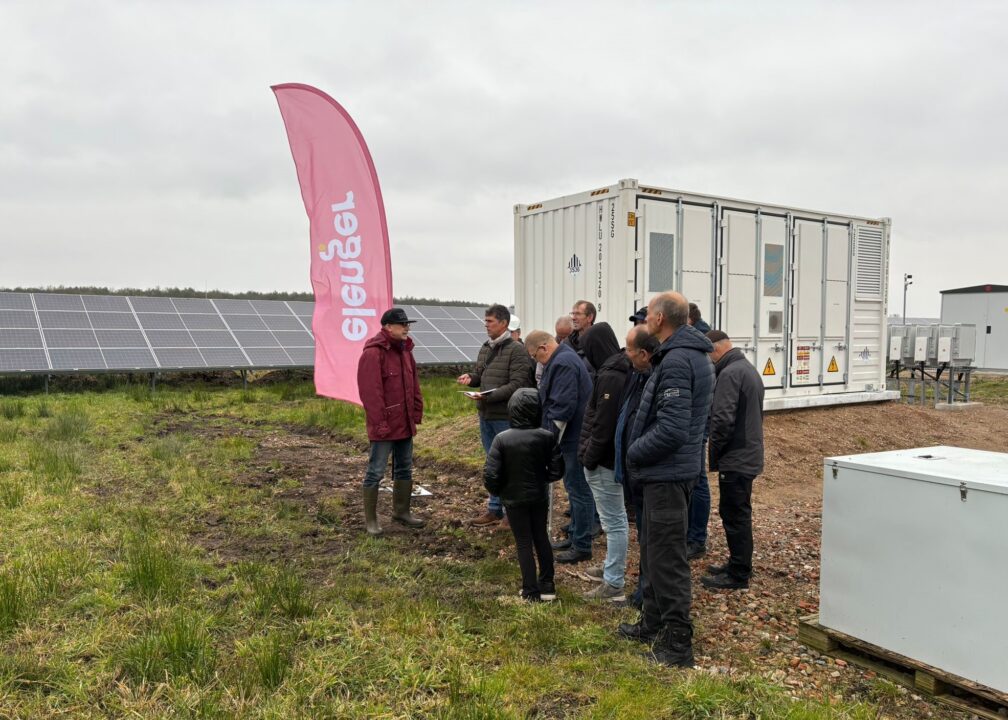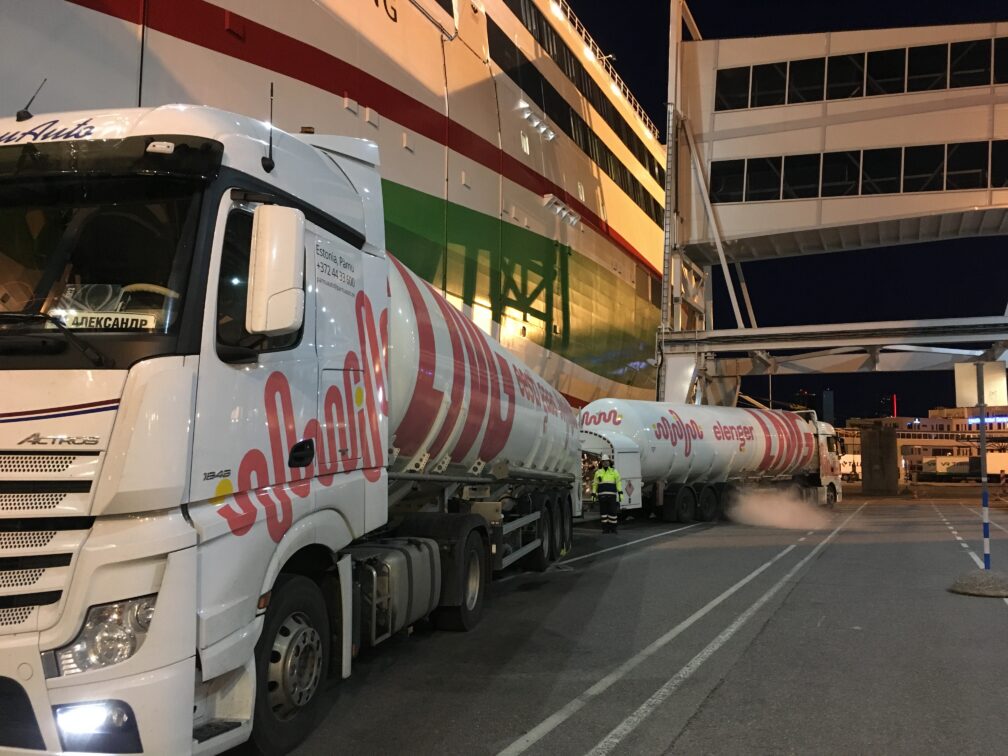Gas market overview Q2 2025
Geopolitics Cloud the Refill Season
- Geopolitics Drove Gas Prices During Q2
- Rapid Storage Build Amid Diverging National Policies
- Q3 Gas Market Outlook: Stable for Now, Risks Lurking
Geopolitics Drove Gas Prices During Q2
The second quarter of 2025 began with a sharp decline in prices, as TTF front-month futures dropped by around 20% between April 1st and April 9th. This weakness was primarily driven by renewed geopolitical tensions following the inauguration of Donald Trump and the announcement of new U.S. tariffs, sparking fears of a global trade war. These developments sent shockwaves through global economic outlooks and pressured all asset classes—including gas. The price drop also coincided with the seasonal demand decline in Europe, as the heating season came to an end. Following this initial sell-off, the market entered a relatively calm period with low volatility lasting until the end of May.
Volatility returned after that, fueled first by larger-than-expected Norwegian maintenance outages—one of the key risks we highlighted in our previous publication. This was compounded by the European Union’s announcement of its plan to fully phase out Russian gas imports by the end of 2027.
Following a few quieter weeks, geopolitical tensions escalated further in June. On June 13th, open conflict broke out between Israel and Iran. TTF prices reacted swiftly, climbing from around €35/MWh to €41–42/MWh. However, the hostilities proved to be short-lived. Following a rapid de-escalation, gas prices dropped by 12% in a single day and continued to decline in the following week, reaching below €33/MWh by the end of June (see Fig. 1).
The average price for the ICE Endex TTF front-month benchmark during Q2-25 was 35.702 EUR/MWh, with forward contracts for the nearest full month, August 2025, closing at 32.898 EUR/MWh on June 30th (see Fig. 1). The forward curve for natural gas remains fairly flat throughout the near months, with coming Winter months trading around 37 EUR/MWh (see Fig. 2).
Above means that winter gas prices are slightly higher than remaining summer prices, but still economically not yet profitable to inject gas during the summer and withdraw it in the winter as taking into account storage and financing costs the breakeven point taking would be around 2.5 – 3 EUR/MWh. End of Q2 the spread stood slightly lower than 2 EUR/MWh but during the quarter the spread was rather closer to 1.50 EUR/MWh (see Fig. 3).
This leads us to the critical element in European gas and energy security – storage levels and summer injections to achieve security of supply for Winter.
Rapid Storage Build Amid Diverging National Policies
By the end of 2024, storage levels had already fallen below the 5-year average (see Fig. 5). January and the first half of February saw continued high depletion, as cold and windless weather across Europe led to elevated gas-for-power generation (see Fig. 4). Toward the end of March, Europe recorded its first days of net injections, broadly in line with seasonal norms.
Q2 marks the start of the core injection season, and despite the Winter-Summer spread not being clearly in the money—remaining below the typical break-even threshold of €2.5–3.0/MWh—storage levels across Europe rose more rapidly than expected. Many market participants operate under long-term storage agreements and treat fixed reservation fees as sunk costs. As a result, injection decisions during Q2 were often made by comparing the Summer-Winter spread only against financing costs—typically around €1/MWh—which in many cases made injections economically viable despite the low absolute spread. As of the end of June 2025, European gas storages were approximately 58.7% full—well below the 77% level seen at the same point last year, but with steady refill momentum building through late Q2 (see Fig. 4).
EU regulation remains an important backdrop. The Gas Storage Regulation (EU/2022/1032), which sets a binding 90% storage target for 1 November, has been extended through 2027. However, revisions passed by the European Parliament now propose lowering the target to 83%, allowed to be met between 1 October and 1 December—with possible deviations up to ±4–10 percentage points in adverse conditions, but not below 75% (European Parliament). These adjustments aim to smooth refill activity through summer and temper price spikes.
Beneath the EU-wide average, significant national disparities are becoming increasingly evident. Italy took early steps to support its refill efforts, introducing a storage subsidy scheme in April. Under this program, the government offered around €1.90/MWh in multiple auctions to encourage injections despite an unfavorable market spread. The initiative followed a winter that had left Italy’s storages only 42% full and has proven highly effective: by the end of June, close to 90% of Italy’s storage capacity had been booked for the upcoming winter, with actual inventory levels approaching that mark.
In contrast, Germany has struggled to regain momentum. After exiting winter with inventories below 32%, injection progress remained sluggish throughout Q2. As of end-June, German storage levels were still below 50%, notably lower than both the EU average and prior-year levels. A key concern has been the country’s largest facility, Rehden, which remained nearly empty in late June despite its strategic importance. The absence of market incentives—Germany has no equivalent to Italy’s subsidies—combined with failed capacity auctions and a subdued W–S spread have led to underwhelming commercial participation. As refill targets begin to tighten heading into Q3, pressure is mounting on Berlin to consider state-backed measures to ensure winter readiness. Germany has lowered its national start‑November target to 70% overall, with varying thresholds depending on storage type. This level is very close to the actual amount withdrawn during last winter, making it a narrow and potentially risky margin. During the 2024-2025 winter Germany withdrew around 65-68% of its total storage capacity, depending on how one defines usable volumes, which means the 70% target for November leaves almost no buffer in case of colder-than-average winter to supply disruptions.
Q3 Gas Market Outlook: Stable for Now, Risks Lurking
Looking ahead to Q3 2025, the European and global gas markets are likely to remain shaped by a mix of structural tightness, geopolitical uncertainty, and weather-related demand risks. On the European side, storage refilling remains the dominant theme, with a growing spotlight on lagging countries like Germany. The lack of strong commercial incentives could limit injections unless market spreads improve or additional state-backed mechanisms are introduced. Meanwhile, ongoing Norwegian maintenance—especially if extended or unscheduled—could create intermittent supply tightness, as seen in Q2. On the global stage, the LNG market remains structurally tight, with the IEA warning that 2025 will be another challenging year due to slow capacity additions and continued competition from Asia. Although Asian demand has remained subdued so far, any rebound in China or Japan could tighten global balances quickly. Geopolitical risks—particularly in the Middle East—will also remain a key driver, as any escalation involving the Strait of Hormuz or key regional infrastructure could have immediate price impacts across both gas and oil markets. Finally, weather will increasingly influence short-term pricing: a hotter-than-normal summer could lift gas-for-power demand in Europe and Asia, while Atlantic hurricane activity poses a risk to U.S. LNG exports. Overall, the Q3 outlook points to a market that is well supplied for now but remains vulnerable to a combination of policy, physical, and geopolitical shocks.
This market overview is for informational purposes only. We aim to compile the most relevant data from various sources in good faith but the analysis should not be treated as an advice or taken as






